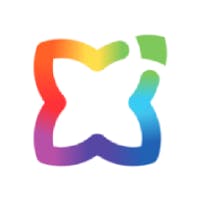Experience is the best teacher.
You have heard this phrase, in this language or another. You may even have said it yourself. Like most cliches, any truth that may reside within it has long since lost its power to spark reflection.
The word awesome, for example, used to be reserved for biblical miracles, and is now used to describe an appetising sandwich. And do not get us started on who qualifies as a legend these days. Achilles would be most upset.
But it does not make the phrase any less true, now does it? Experience-based learning (EBL) or experiential learning is a well understood learning methodology, but it is often talked about as either something adjacent to education (such as a learner doing work experience in a company while at school), or something totally apart, like when your grandparents tell you they learned everything they needed to know at the “university of life”.
So what if experience-based learning could be at the heart of a learning environment, not apart from, but rather embedded within it? How would this even work?
Experience-based learning methodologies in a nutshell
All this talk of Achilles has us charging too far ahead. Let’s look firstly at what EBL actually is, and why it has such an impact on learning.
At a neuroscience level, the brain learns best through urgency, repetition and association. Think about it - we are in a learning space in which we feel psychologically safe, and we are engaged in an actual experience that is meaningful to us and connects to something we chose to do. What happens?
- We experience urgency in the learning experience when we need to make a decision, whether we are negotiating a price for some supplies we need for a business idea, or quickly deciding how to correct an error in an artefact we are shaping in woodwork.
- We experience repetition on our terms, as we make mistakes, try something different, and then try again. Our conscious mind is hyper alert in such situations, and the learning is deeper and stronger.
- We experience association as we connect our experience to other things we have learned, or other situations we have been in. As we connect the things we do to their outcomes and the way they make us feel, the diversity and richness of our neural connections increases.
None of this happens when you are the passenger. To be talked to, instructed, taught… these barely scratch the surface of the learning that comes from lived experiences.
Experience-based learning really works, on one condition
How many times have we made the same mistakes in life? Relationships, decisions, purchases, habits and all the rest of it. Just because we experience something does not automatically mean that we learn.
We need to interrogate, critique and reflect on our experience for a real shift to take place, and to seal the deal we need to build forward from it and wire in a better way to do something.
This evaluation and reflection can be during the experience, as we co-create it with others, discussing why something is working or not, and what to do next.
It can also take place after the learning: immediately, and then again some days later. Journaling, discussion, reflection, writing from general prompts rather than free form; all of this helps us to squeeze the most benefit out of our experience. What did we learn, and how did we learn it? How did it make us feel, and what will we take forward from here?
In this sense, experience-based learning intersects with so many other learning methodologies: play-based, nature-based, place-based and so many more. Experiences can take many forms in many spaces.
What is a learning environment to you?
When we come to the natural question of how we incorporate or embed experience-based learning in the learning environment, we are going to counter with a question of our own. What exactly is a learning environment?
If our imagination is limited to the “classroom” then we also limit the potential for true experience. If we think about scripting tasks based on what we would like learners to do, we have already diluted the learning further.
At Learnlife, we hold that learning takes place in the community, at home, with your peers and Learning Guides, on your own or out amongst the natural environment. Life is experiential. By building on this in a supported environment, we can support learners to connect the dots.
Have you had an experience that sparked your curiosity recently? How can we support you to further explore that, and what learning experiences can we extract?
Have you learned something today with your peers that you would like to take outside these walls and apply at home or in the community? Let's talk about how that would work and follow up afterwards to see what happened, what shifted, and what comes next.
How can we explore opportunities to develop the skills you will need for the world ahead, within the experiences that are meaningful and relevant to you?
These are the questions, but the answers are easier than we might think. When we learn through experience, the support structures around come naturally. Sharing experiences is a cornerstone of the human condition, and we need no learning methodologies to tell us so.
When we make space for learners to direct their own experiences, there is always room to build from there. When learners are ready to build insight from experiences on their own, they will be better prepared to adapt to the uncertain world of tomorrow. When we support a culture of play and exploration, we feel less shame around what went wrong, as we celebrate the learning itself, always.
At Learnlife we use a range of learning methodologies to support personal learning. To find out more about diversifying learning methodologies, read them here.


